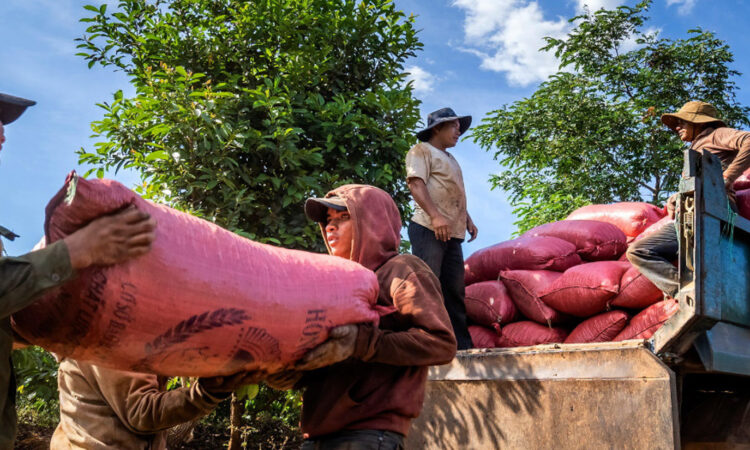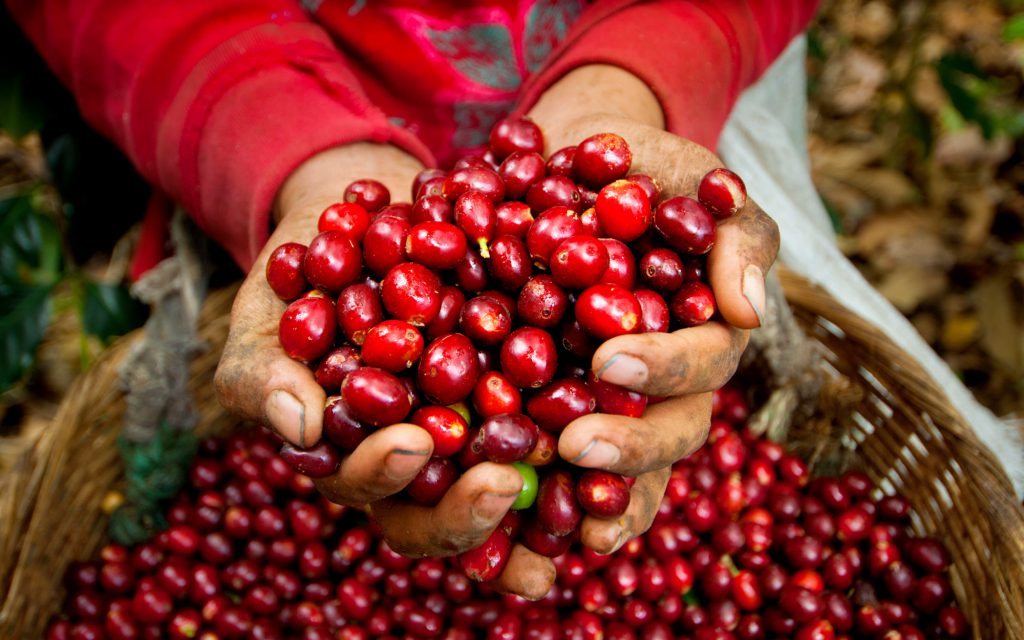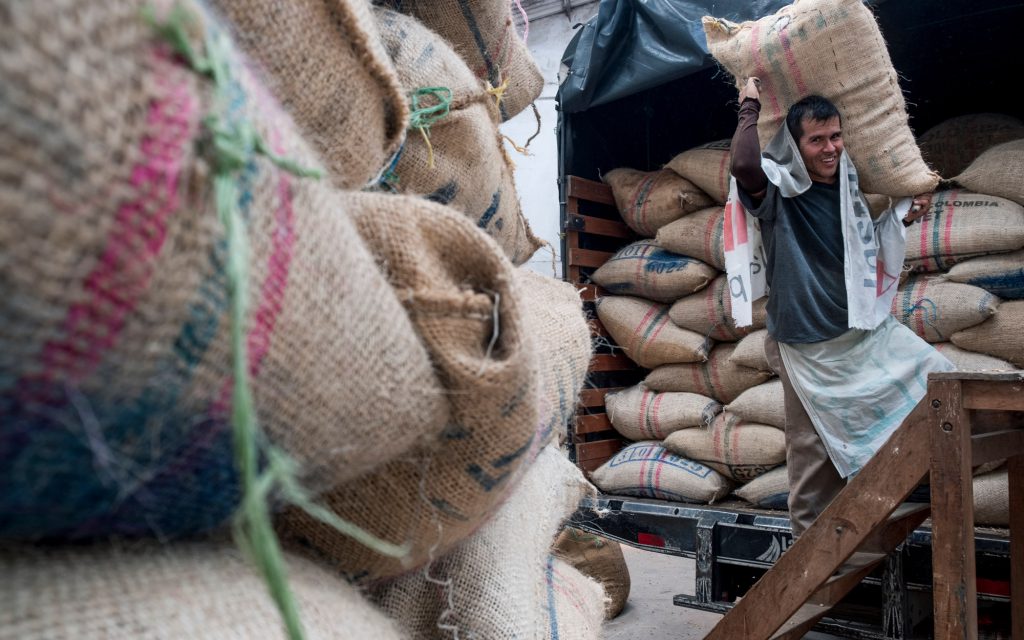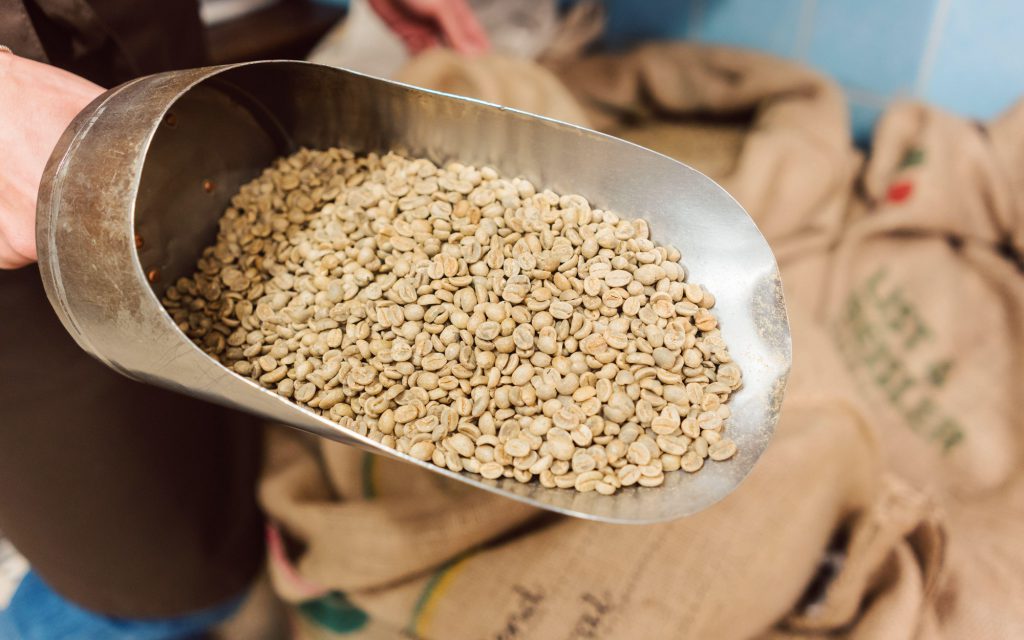
For the most part, both the price of arabica and robusta rely on futures contracts. These are legal agreements to buy or sell a particular commodity at a predetermined price on a set date.
However, while the C price and robusta futures are determined by real time transactions of coffee, the price of coffee is also affected by fluctuations in foreign exchange rates. This is because while coffee is sold in US dollars on the C market, coffee is also purchased in other currencies along the supply chain – largely depending on the origin country it was sold in.
Changes in the foreign exchange market (also known as forex, FX, or currencies market) can affect many people across the coffee supply chain. Fluctuations in the market can influence prices paid by roasters and consumers and prices paid to farmers, as well as their production costs. Ultimately, movements in the FX market can have a big impact on economic and social sustainability in the coffee industry.
To better understand how fluctuations in the FX market influence the price of coffee, I spoke to an FX trader, a producer in Brazil, and a UK roaster. Read on for more of their insight.
You may also like our article on how technology can support the future of coffee production.


What is the foreign exchange market?
The foreign exchange market is a global decentralised market which is used to trade currencies and determine foreign exchange rates for every currency in the world. It is the largest trading market in the world, with daily turnover reaching US $7.5 trillion in April 2022 for over-the-counter (OTC) transactions.
As with many other global financial and trade markets, FX is impacted by a number of macroeconomic factors. These can include inflation, decisions made by central banks, fluctuating interest rates, and changes to political parties – especially elections.
Kelly Oviedo is a Foreign Exchange Trader and Controller at Sucafina. She tells me that the 2022 Colombian presidential elections affected the foreign exchange market – especially because winner Gustavo Petro ran a campaign which pushed for more reliance on renewable energy.
“Colombia is a big exporter of oil, so when Petro was voted in, the global market anticipated that his party would pass policies to reduce oil exports,” she says. “In turn, the Colombian peso weakened on the global financial market.”
Another factor that can influence foreign exchange rates is the price of money, Kelly adds.
“The price of a particular currency is related to the interest rate from that country’s central bank,” she says. “If one country reduces or increases its interest rates relative to another country’s then it will add more pressure onto its own currency conversion.”
As coffee is bought and sold using different currencies across the supply chain, it’s vital that stakeholders understand the value of one currency against another.
Local currency and the US dollar
A producer is likely to be paid in their local currency, such as the Colombian peso or Ethiopian birr, for example. Traders are likely to sell coffee to exporters in US dollars, while roasters will purchase coffee using their local currency – which can range from the euro to Japanese yen to the British pound.
Ultimately, understanding the value of each type of currency in respect to one another is an essential part of the trade of coffee.
Similar to how traders hedge coffee prices in the C market, traders can also hedge currency by buying forward contracts using specific currencies. These strategies allow importers, larger producers, and roasters to hedge against exchange rates which significantly change between two currencies.
When hedging, companies sell a coffee futures contract when they purchase a “physical” coffee contract at the C price. This typically means that if the C price falls, these companies can buy their futures contract and use the profits to offset the price of their “physical” coffee.
Conversely, if the C price rises, these companies end up taking a loss on their futures contract, but can ultimately sell their coffee at a higher price.


How does FX influence coffee prices at origin?
The foreign exchange market affects every stage of the coffee supply chain. However, it affects producers specifically in two main ways: through production costs and changes in domestic coffee prices.
For instance, as chemical fertilisers are manufactured using oil – which is globally traded in US dollars – the price of fertiliser is ultimately linked to the value of the US dollar in some capacity. Fertiliser is an essential agricultural input for many farmers, and often represents one of the largest costs of production when used.
Producers then have to buy fertiliser using their local currency, so the final price can be influenced by the exchange rate between the US dollar and their local currency.
Let’s use Colombia as an example. When the Colombian peso is weaker against the US dollar, a producer ends up spending more money on the right amount of fertiliser. Alternatively, if the Colombian peso is stronger than the US dollar, the producer needs to pay less money for the same amount.
Another way that the foreign exchange market affects producers costs is by influencing local coffee prices.
“This is more of a direct impact than on the costs of inputs,” Kelly says. “In simple terms, the power of the US dollar compared to a producer’s local currency can affect the buying power of exporters, which can make it easier or harder to compete with local buyers.”
Arguably, this can have serious consequences for local buyers who generally have less buying power than larger and more established exporters. However, it can benefit local farmers in some cases – a weaker local currency could mean that exporters can afford to pay more money (in local currency) for cherry or parchment, so producers end up receiving higher prices.
Value of local currency against the US dollar
Since exporters usually sell coffee in US dollars, its buying power compared to a local currency can impact how competitive local prices are for cherry or parchment.
For example, if the Colombian peso is stronger than the US dollar, exporters are more likely to offer prices which are similar to local buyers’ prices. However, if the Colombian peso is weak against the US dollar, exporters can buy more pesos with their dollars, and can then offer more competitive prices than local buyers.
The graph below demonstrates C price variations in the US dollar, Brazilian real, and Colombian peso:


From January 2021 to December 2022, the distance between the green (US dollar) and red (Colombian peso) lines shows how the Colombian peso has steadily weakened against the US dollar. As a result, Colombian farmers have been less affected by lower market prices in 2022. This is because even though their currency weakened, Colombian farmers were receiving a higher local price than Brazilian farmers (whose currency maintained its value relative to the US dollar).
As the Brazilian real and Colombian peso are weaker against the US dollar than other currencies in Latin America, exporters can typically purchase more Brazilian and Colombian coffees for the same amount in US dollars.
Ricardo dos Santos Bartholo is the owner of Fazenda Cinco Estrelas in Patrocínio, Minas Gerais.
“When the US dollar strengthens, the Brazilian real weakens,” he says. “However, this increases the value of the real for coffee producers, so we are able to be more competitive in the international coffee market.”


How are consuming countries affected?
While cherry and parchment are purchased in local currencies, green coffee is mostly purchased in US dollars. This means that the value of the dollar influences the prices that roasters outside the US pay for their green coffee.
Although US roasters are affected by exchange rates for the US dollar against local currencies where coffee is produced, the price they pay for green coffee isn’t impacted by the value of the US dollar.
However, prices for roasters outside the US are influenced by exchange rates and the FX market. These roasters buy coffees that were initially purchased in US dollars, but they also need to pay in their own local currency – so the price is determined by that currency’s value against the dollar.
Using the example of Canadian dollars, if the exchange rate is 1 US dollar to 1.5 Canadian dollars, a Canadian roaster will need to pay more for their coffee. If coffee is $10 US/kg, a Canadian buyer would be paying $15 CA/kg for the same coffee.
Conversely, if the US dollar weakens to the point that 1 US dollar equals 1 Canadian dollar, a Canadian roaster will only pay $10 CA/kg, assuming the price of the coffee stays the same in US dollars.
Foreign exchange conversions also influence demand for coffee. Recently, we have seen demand for coffee increase in the US – especially while the US dollar is strong compared to other currencies.
In turn, this means that US roasters pay less for their coffee, which ultimately helps to increase demand.


Balancing risks as a roaster
Although it might seem like roasters have no choice but to simply absorb costs related to currency fluctuation, there are ways that they can mitigate this risk.
Andrew Duncan is the COO of Workshop Coffee in London, UK.
“All of the producing countries we buy from trade and sell coffee in US dollars,” he says. “This means that we need to convert this into our local currency.
“As a result, there are additional fluctuations we need to account for on top of fluctuations in the C price,” he adds.
He explains that Workshop Coffee typically estimates its annual volume of green coffee it needs to purchase, and then buys forward contracts on the FX market at a percentage of its total projected expenditure for that year.
In practice, this means that UK roasters can lock in the current exchange rate between the British pound and US dollar for a certain percentage of their total costs. This means that if the US dollar strengthens against the pound, the roaster won’t spend any more money.
The risks of hedging
However, it’s important to note that hedging isn’t always effective so roasters need to think hard about adopting it as a strategy and exercise caution when doing so.
For example, if the C price increases significantly then the US dollar they did buy would no longer cover the amount of coffee they had planned to buy. Alternatively, if the US dollar weakens, roasters will lose out on potential savings.
“It’s mostly about trying to mitigate as much risk as possible,” Andrew says. “Hedging can be an educated guess, as well as knowing how to de-risk price volatility by buying forward contracts so that we know what our costs will be.”
In recent years, higher volatility in the FX market have meant that the margins for risk and reward are much higher. For example, Andrew explains that while he previously planned to purchase US dollars to cover around half of his expenditure for a six-month period, he now does so over a much shorter period.
To mitigate risk, Andrew suggests using a currency broker instead of a local bank to exchange currency.
“If you go to a bank and ask to make a payment to the importer in US dollars, the exchange rate will be worse,” he says.
Instead, a broker converts your payment into US dollars and then makes the payment to the importer on your behalf.
“This way, you tend to get a better exchange rate,” he adds. However, roasters still need to be careful when doing so, and make sure to compare exchange rates between banks and brokers before making any decisions.


While foreign exchange may not be as widely discussed in the industry as the C market, it certainly has an impact on the price of coffee across the supply chain – affecting producers, traders, roasters, and consumers alike.
For some producers and many roasters, understanding how the foreign exchange market works and its influence on the price of coffee might inform how they buy and sell their coffee. Ultimately, improving awareness can help both roasters and producers to learn about how FX impacts them – and what they can do to mitigate risk and maximise profits.
Enjoyed this? Then read our article on four ways for small and medium-sized coffee roasters to manage price risk.
Perfect Daily Grind
Please note: Sucafina is a sponsor of Perfect Daily Grind.
Want to read more articles like this? Sign up for our newsletter!



